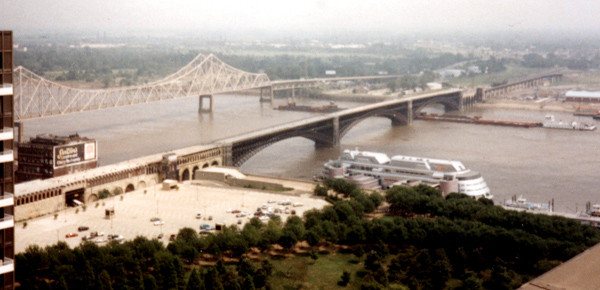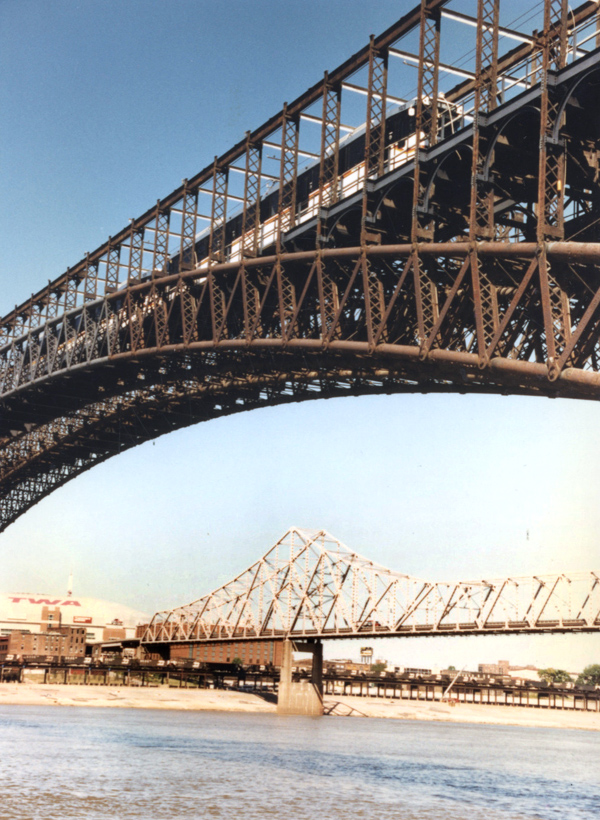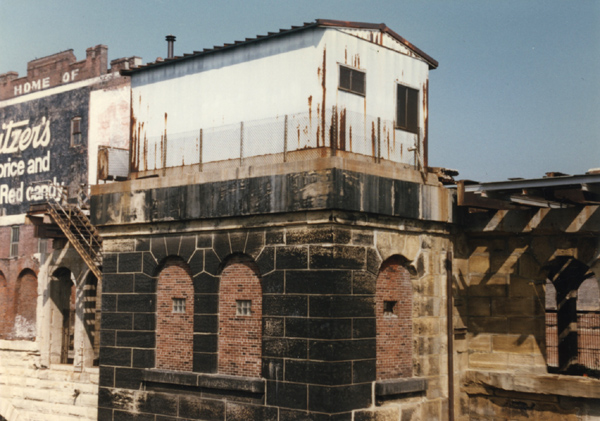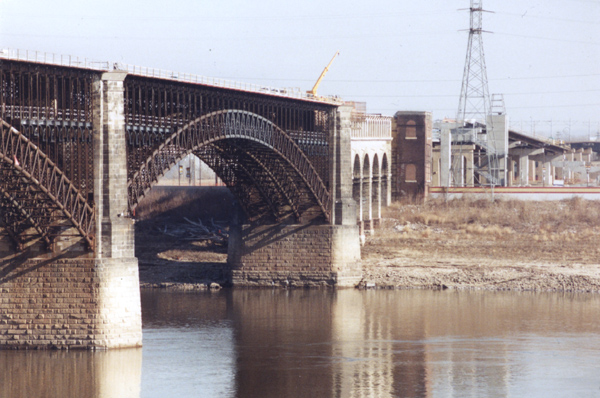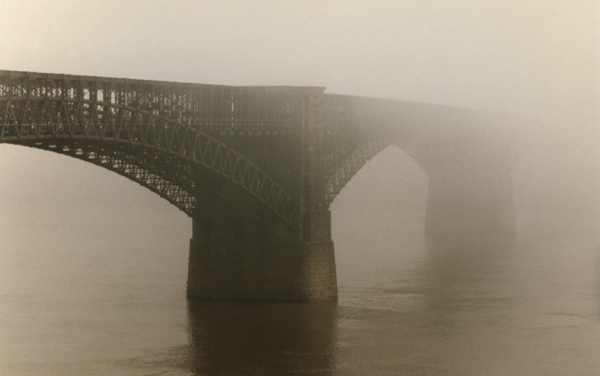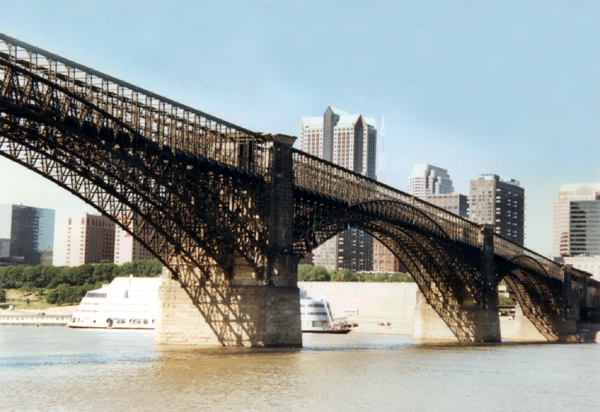Built St. Louis > > Recalled to Life || River Bridges > > The Eads Bridge
|
|
The Eads Bridge has been one of the most iconic structures in St. Louis since its 1874 opening. As an eminently elegant structure and prominent feature of the riverfront, it has appeared in countless postcard views. The Eads was a structure of numerous firsts - it was the longest arched bridge in the world,the first river bridge at St. Louis, and the southern-most Mississippi River bridge when it opened - a title it would hold until Memphis's Frisco bridge opened in 1892. The bridge made pioneering use of steel as a structural component. For the construction of its massive piers, it made the first use of pressurized construction chambers (and construction crews paid a heavy price due to the then-unknown effects of "the bends".) The Eads was the brainchild of its namesake, engineer and shipbuilder James B. Eads, who designed it in 1867. Fierce opposition from steamboat interests had thus far prevented a river bridge at St. Louis after the Civil War. No bridge meant no railroads, and St. Louis began to lose ground to Chicago. Only after some dogged legal and business battles was Eads able to get his bridge underway, and even then he faced restrictions imposed by the steamboat industry regarding free passage of river traffic. The bridge opened in 1874, but in some ways it was too little, too late. Chicago was already on its way to eclipsing St. Louis. The bridge company would go bankrupt within a year - but the railroads did come, and St. Louis's transformation into an industrial powerhouse began. Streetcars and carriages crossed the upper deck, eventually joined by automobiles. Other bridges rose up and down the river, starting with 1889's Merchants Bridge, and the Eads became less important through the 20th Century. By the time the Interstate opened on the Poplar Bridge, the Eads was functionally obsolete. Rail traffic ceased in 1974; modern diesel locomotives were too large to negotiate the bridge and its attached tunnel through downtown St. Louis. The roadway was closed in 1991, when Metrolink engineers discovered that the upper level traffic deck was too weak to support cars. The deck was eventually stripped off; during the 1990s, the Eads was a spectcular abstraction of open steel framing. |
|
|
After an ownership swap in which the City of St. Louis gained ownership of the bridge (in exchange, the Termainal Rail Association got the MacArthur Bridge), Metrolink began using the lower rail deck in 1994, marking the first time that trains had run across the bridge since the early 1970s. The light rail system also makes use of the one mile tunnel underneath downtown that feeds the rail portion of the bridge. |
|
|
Though the train deck was in use, the city for years lacked the money to replace the traffic deck. The Illinois approach was torn down as well, compounding the problem. It was a pet peave of mine ever since I first came to St. Louis (in 1992): you couldn't ride a bike across the Mississippi River. The superstructure of the bridge was also in poor condition. Bits and pieces of the old roadway, a metal-siding toll booth, rust, calcification, bird droppings, and assorted debris cluttered the St. Louis approach to the bridge. |
|
|
Construction began on a new roadway in 2001; the bridge's grand reopening was celebrated on the 4th of July, 2003. Four lanes of traffic and a 5-foot bike/pedestrian path now cross the bridge. Distant plans have variously called for removing the traffic lanes entirely, or reducing them to 2 lanes, allowing greater use of the bridge as pedestrian realm and gathering space. Already light on traffic, the Eads will be even less needed once the new Interstate bridge opens to the north. Still, my hope is that the Eads will ccontinue carrying motor traffic. An interstate highway is no substitute for a more human-scaled, local-road connection across the river. |

